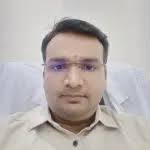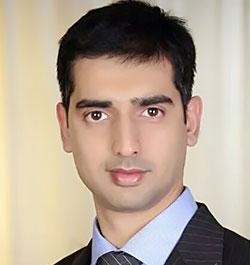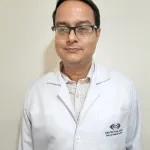DIAGNOSTICS Both Eye IOP Applanationtonometery
India
-
Our Price USD 51
-
Hospital Price USD 54
-
You Save : USD 3
Booking Amount: USD 5. Pay Remaining 90% at the hospital.
Book NowAdditional Credit
Among the important extras we offer as part of the Additional Credit are the following:
-
Site Tourism For The Patient & Attendant
-
Airport Pick & Drop Service
-
Ambulance service at airport
-
Priority appointments with The Doctor
-
Cancel Easily Anytime with Full Refund
-
Room Upgradation
-
Free Online Doctor Consultation Valued at USD 20
-
Free hotel Stay for 5 to 7 days Accordingly
-
Welcome Kit at Arrival
-
Interpreter
-
Medical Visa Assistance
What is Included?
- Doctor consultation charges
- Lab tests and diagnostic charges
- Room charges inside hospital during the procedure
- Surgeon Fee
- Cost of implant
- Nursing charges
- Hospital surgery suite charges
- Anesthesia charges
- Routine medicines and routine consumables (bandages, dressings etc.)
- Food and Beverages inside hospital stay for patient and one attendant.
What is not Included?
- Extra Radiology Investigations
- Healthcare Professionals Charges of other consultations.
- Other Requested Services such as Laundry etc.
- Additional Pharmaceutical Products and Medicines After Discharge from Hospital.
- Management of Conditions Unrelated to Procedures or Pre-Existing.
- The cost of any additional implants will be in addition to the package cost.
Package Description
DIAGNOSTICS IOP Applanationtonometery:
The Imbert-Fick principle states that the pressure (P) within a sphere equals the force (F) required to flatten its surface divided by the flattening area (A), P=F/A. Multiple approaches for measuring intraocular pressure leverage the notion of flattening the cornea in practise.
Disease Overview:
Glaucoma is a collection of eye diseases that affect the optic nerve, which is essential for proper vision. An excessively high pressure in your eye is typically the source of this injury. Glaucoma is one of the most common causes of blindness in persons over 60.
It can strike anyone at any age, although it is more frequent among the elderly.
Many types of glaucoma have no symptoms. Because the effect is so slow, you may not detect a change in vision until the problem has progressed significantly.
Because glaucoma vision loss is irreversible, it's critical to get frequent eye exams that include measures of your eye pressure so that a diagnosis may be established early and treatment can begin. Vision loss can be delayed or avoided if glaucoma is detected early. You'll almost certainly require therapy for the remainder of your life if you have the disease.
Disease Signs and Symptoms:
Glaucoma signs and symptoms vary based on the kind and stage of the disease. Consider the following scenario:
- Glaucoma with an open angle
- Blind patches in your peripheral (side) or central vision, often in both eyes
- Advanced phases of tunnel vision
Glaucoma with acute angle closure
- Headache that is severe
- Pain in the eyes
- Vomiting and nausea
- Vision is hazy
- Lights with halo effects
- Redness in the eyes
Glaucoma will eventually cause blindness if left untreated. Even with therapy, roughly 15% of glaucoma patients lose vision in at least one eye within 20 years.
Disease.
Disease Causes:
The injury to the optic nerve causes glaucoma. Blind patches form in your vision field when this nerve deteriorates. This nerve injury is frequently linked to increased ocular pressure for reasons that doctors don't completely understand.
A accumulation of a fluid (aqueous humour) that circulates across the interior of your eye causes increased ocular pressure. At the angle where the iris and cornea meet, this internal fluid generally drains out through a tissue called the trabecular meshwork. When fluid is overproduced or the drainage system fails, the fluid cannot flow out at its normal rate, causing increased eye pressure.
Glaucoma is a disease that runs in families. Scientists have discovered genes linked to excessive eye pressure and optic nerve injury in certain people.
Glaucoma comes in a variety of forms, including:
Glaucoma with an open angle
The most prevalent kind of glaucoma is open-angle glaucoma. The trabecular meshwork is partially occluded, yet the drainage angle produced by the cornea and iris remains open. As a result, the pressure in the eye steadily rises. The optic nerve is harmed by this pressure. It happens so slowly that you can lose your vision before you even realise there's a problem.
Angle-closure glaucoma
Also known as closed-angle glaucoma, is a condition in which the iris bulges forward, narrowing or blocking the drainage angle created by the cornea and iris.
It can develop quickly (acute angle-closure glaucoma) or gradually (progressive angle-closure glaucoma) (chronic angle-closure glaucoma). Glaucoma with acute angle closure is a medical emergency.
Glaucoma with a normal intraocular pressure
Even if your eye pressure is within the usual range, your optic nerve is injured with normal-tension glaucoma. No one knows why this is the case. It's possible that you have a sensitive optic nerve or that your optic nerve isn't getting enough blood. Atherosclerosis, or the accumulation of fatty deposits (plaque) in the arteries, or other disorders that affect circulation might be to blame for the reduced blood flow.
Children with glaucoma
Glaucoma is a condition that can affect newborns and children. It might be present from birth or evolve over time. Drainage obstructions or an underlying medical issue might cause optic nerve injury.
Glaucoma with pigmentation
Pigment granules from your iris build up in the drainage ducts of your eye in pigmentary glaucoma, delaying or stopping fluid exiting your eye. Jogging, for example, can mix up pigment granules, causing them to lodge on the trabecular meshwork and producing occasional pressure increases.
Risk Factors
Because chronic types of glaucoma can cause vision loss before any symptoms or indications appear, be aware of the following risk factors:
- Internal eye pressure that is too high (intraocular pressure)
- Being over 60 years old
- Being black, Asian, or Hispanic has its advantages and disadvantages.
- Having a glaucoma family history
- Diabetes, heart disease, high blood pressure, and sickle cell anaemia are examples of medical problems.
- Having corneas with a narrow central layer
- Being excessively nearsighted or farsighted is a condition that affects a person's vision.
- If you've had an eye injury or certain types of eye surgery, you're at a higher risk.
- Long-term use of corticosteroid medicines, particularly eyedrops
Disease Diagnosis:
Your doctor will go over your medical history with you and do a thorough eye check. He or she may conduct a variety of tests, including:
- Intraocular pressure measurement (tonometry)
- A dilated eye examination and imaging studies are used to check for optic nerve injury.
- Examining for regions of vision impairment (visual field test)
- The thickness of the cornea is measured (pachymetry)
- Taking a look at the drainage angle (gonioscopy)
Disease Treatment:
Glaucoma can't be reversed once it's started. Treatment and frequent examinations, on the other hand, can help decrease or prevent vision loss, especially if the condition is caught early.
Reduced eye pressure is used to treat glaucoma (intraocular pressure). Prescription eyedrops, oral drugs, laser therapy, surgery, or a combination of these may be available depending on your circumstances.
Prescription eyedrops are commonly used to treat glaucoma. These can help lower eye pressure by changing the way fluid drains from your eye or reducing the quantity of fluid produced by your eye.
Medications taken orally
If eyedrops alone aren't enough to lower your eye pressure, your doctor may prescribe an oral drug, such as a carbonic anhydrase inhibitor. Frequent urination, tingling in the fingers and toes, sadness, stomach distress, and kidney stones are all possible adverse effects.
Surgical procedures and other treatments
Laser therapy and different surgical procedures are two more therapeutic possibilities. The following treatments are designed to increase fluid outflow within the eye and thereby reduce pressure: Laser therapy is a type of treatment that involves the use of If you have open-angle glaucoma, laser trabeculoplasty may be a possibility. It's carried out at the doctor's office. A tiny laser beam is used by your doctor to unblock congested passages in the trabecular meshwork. It might take a few weeks for the full impact of this surgery to be felt.
Filtering surgery is a procedure that involves the removal of contaminants. A trabeculectomy is a surgical treatment that involves making a hole in the white of the eye (sclera) and removing part of the trabecular meshwork.
Tubes for draining. A tiny tube shunt is inserted into your eye by your eye surgeon to drain out excess fluid and relieve your eye pressure.
Glaucoma surgery that is minimally invasive (MIGS). To reduce your eye pressure, your doctor may recommend a MIGS surgery. These treatments are less risky and need less immediate postoperative care than trabeculectomy or the placement of a drainage device. They're frequently used in conjunction with cataract surgery. There are several MIGS treatments to choose from, and your doctor will explain which one is best for you.
You'll need to see your doctor for follow-up checks after your operation. Additionally, if your eye pressure continues to rise or other abnormalities in your eye occur, you may need to undergo additional operations.
Acute angle-closure glaucoma treatment
Glaucoma with acute angle closure is a medical emergency. If you've been diagnosed with this illness, you'll require immediate therapy to lower your eye pressure. This will usually necessitate the use of medicine as well as laser or other surgical techniques.
A laser peripheral iridotomy is a technique in which a doctor uses a laser to create a tiny hole in your iris. This permits fluid (aqueous humour) to pass through it, reducing strain on the eyes.
Information related to Treatment
Package Details
Days in Hospital
1 Days
Days in Hotel
*
1 Days
Room Type
Private

Treating Doctor
Dr Amanjot Singh
Ophthalmologist- Vitreo Retina Surgeon, Eyelid Surgery, Refractive surgery, Oculoplasty, Glaucoma Evaluation / Treatment, Canaloplasty, Corneal Surgery, Eye Muscle Surgery, Eyelid Surgery, Orbital Decompression Surgery for Thyroid Eye Disease, Orbital Trauma, Refractive surgery
Max Super Speciality Hospital New Delhi, India
26 Years of Experience

Treating Doctor
Dr. Sudipto Pakrasi
Ophthalmologist- Cataract Surgeon, Glaucoma Specialist
Medanta-The Medicity, Gurgaon Gurgaon, India
34 Years of Experience

Treating Doctor
Dr. Carreen Pakrasi
Ophthalmologist- Cataract Surgeon, Glaucoma Specialist, Refractive surgery, UVEA, Refractive surgery
Medanta-The Medicity, Gurgaon Gurgaon, India
30 Years of Experience

Treating Doctor
Dr. Vidya Nair Chaudhry
Ophthalmologist- Squint Surgeon, Paediatric Otorhinolaryngology, Oculoplasty, Comprehensive ophthalmology, Comprehensive ophthalmology, Glaucoma and retina
Aakash Healthcare Super Speciality Hospital New Delhi, India
18 Years of Experience

Treating Doctor
Dr Ruchi Kabra
Ophthalmologist- Lasik surgeon, Squint Surgeon, Glaucoma Specialist, Ocular Oncology, Refractive surgery, Oculoplasty, Refractive surgery
Center For Sight, Gulbai Tekra, Ahmedabad Ahmedabad, India
18 Years of Experience

Treating Doctor
Dr. Nikhil Prajapati
Ophthalmologist- Cataract Surgeon, Lasik surgeon, Glaucoma Specialist, Ocular Oncology, Refractive surgery, Refractive surgery, Treatment for Keratoconus
Center For Sight, Gulbai Tekra, Ahmedabad Ahmedabad, India
11 Years of Experience

Treating Doctor
Dr. Vanita Pathak Ray
Ophthalmologist- Cataract Surgeon, Glaucoma Specialist
Center For Sight, Banjara Hills, Hyderabad Hyderabad, India
18 Years of Experience

Treating Doctor
Dr Syed Maaz Mohiuddin
Ophthalmologist- Cataract Surgeon, Lasik surgeon, SMILE Surgeon, Refractive surgery, Corneal Surgery, Anterior Segment Surgery, Corneal Grafting, Cornea Transplant, Retinal Surgery, Refractive surgery, Treatment for Keratoconus, Phacoemulsification
Center For Sight, Basheerbagh, Hyderabad Hyderabad, India
16 Years of Experience

Treating Doctor
Dr. Vanita Pathak Ray
Ophthalmologist- Cataract Surgeon, Glaucoma Specialist
Center For Sight, Nampally, Hyderabad Hyderabad, India
18 Years of Experience

Treating Doctor
Dr. Debasis Chakrabarti
Ophthalmologist- Laser Surgeon, Cataract Surgeon, Lasik surgeon, Glaucoma Specialist, Eyelid Surgery, Eye Checkup - General, Corneal Surgery, Oculoplastic Surgery
Center For Sight, Rabindra Sadan, Kolkata Kolkata, India
17 Years of Experience


